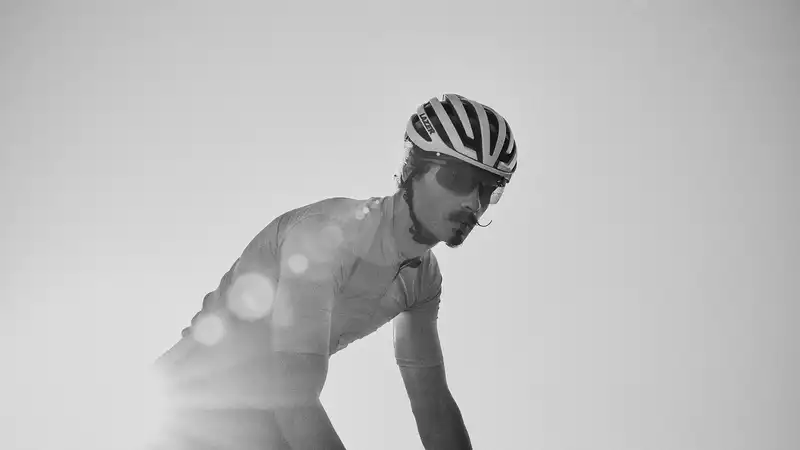About two years ago, Lazer introduced a new kind of angular impact protection to the market. It meant abandoning the brand leader MIPS and moving to a new technology named Kineticore. The first helmet to use this technology was the aero-focused Lazer Vento Kineticore, and since then Lazer has gradually adopted it in all its models. The last one was the Lazer Z1, but today the brand has changed that. Now there is the Lazer Z1 Kineticore, a new contender for lightweight king in the list of best road bike helmets.
In independent helmet impact protection tests conducted by the Virginia Tech Helmet Institute, MIPS tends to dominate, but MIPS is not the only choice. Rather, MIPS dominates because it offers a simple third-party option that can be used with any helmet brand. To differentiate itself, Lazer has taken a different direction.
Kineticore took a different approach, incorporating a slip plane directly into the EPS foam instead of a movable liner. In practice, this means that there are a series of blocks on the inner face. When a crash occurs, the blocks deform and break, dissipating energy and allowing the helmet to rotate. This works similarly to the crumple zone in an automobile, but also brings its own advantages to the helmet.
While MIPS options have long left the challenges of heat management and hair snagging behind, Kineticore has been successful due to its inherent integration The Lazer Z1 is a lightweight helmet designed for maximum ventilation on the hottest of rides The Kineticore, not only meets crash protection needs, but also claims to channel arco to help move air across the scalp.
The biggest change in the new version of the Lazer Z1 is the addition of Kineticore, but that's not all: Lazer also emphasizes the helmet's lightweight nature, claiming 220g for the S size (the S sample weighed 226g). Lazer also claims that this number is a result of the Z1 Kineticore is noted as making it "the lightest helmet on the market, including rotational impact protection."
While Kineticore is certainly part of that lightness story, there are a number of other small changes as well.
Given how highly optimized the exteriors of modern EPS helmets are, it is difficult to achieve a significant weight reduction there. Instead, weight reduction is typically achieved through the strap system, and the new Z1 KinetiCore does just that. Gone are the plastic strap dividers, and in their place are only fabric straps made of antimicrobial and recycled materials. As always, lighter weight means less material, and less material is a win-win for the manufacturer, the user, and the environment.
Along with this update, the system Lazer uses to adjust the Z1 has also been updated. Like other Lazer helmets, the Z1 Kineticore does not use the traditional system of tightening the rear basket. Instead of a dial at the rear, there is a dial at the top called the "Lazer Advanced RollSys" design. This system works by pulling from the front and tightening the entire helmet at the same time. This is the same system that was on the previous Z1. What is new is that the thumbwheel has been repositioned from the outside of the helmet to a protected location at the back of the EPS outer. Theoretically, this entire system provides more space for long hair.
Those who value a safe place to store their glasses on long climbs will be glad to see that Lazer also mentions an "eyewear docking slot" as a new feature. Unlike the Vento Kineticore, there are no high-friction additions. Perhaps to keep weight down, the Z1 relies on the shape of the vents to hold the eyewear in place.
It is fair to say that today's updates to the Lazer Z1 are fairly incremental. While keeping a similar profile and usability, small differences have led to updates in usability. As before, the Z1 continues to fill out the Lazer product lineup as a lightweight, breathable option. The 31 vents, including those behind the front headband, continue to provide a 3% breathability advantage (especially compared to non-helmet use) and continue to carry a 5-star Virginia Tech rating.
For those seeking rain protection or an aerodynamic advantage, the accessory lineup is similarly impressive. The Lazer Aeroshell continues to be equipped on the rear for those who want to close the vents, and the Lazer Universal LED for those who want to increase visibility. If visibility is desired, the Lazer Universal LEDs in the rear continue to be supported.
The Lazer Z1 Kineticore is available immediately worldwide for £229.99 / $279.99 / €249.99. Color options include white, matte black, cosmic blue, harbor gray, metallic red, and flash orange, with sizes available in S, M, and L. For more information, visit lazersport.com.
.

Comments